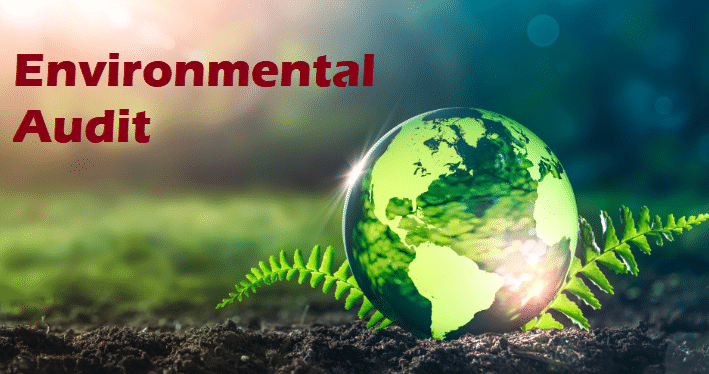Environmental Audit | Environmental Law - CLAT PG PDF Download
| Table of contents |

|
| Introduction |

|
| Origins of Environmental Auditing |

|
| Objectives of Environmental Auditing |

|
| Benefits of Environmental Auditing |

|
| Terminology |

|
Introduction
- Environmental auditing is a tool used to measure the impact of activities on the environment against established criteria or standards.
- Various types of environmental audits exist based on the standards used and the audit's focus.
- Organizations recognize the significance of environmental performance, which is now scrutinized by various stakeholders.
- Environmental audits aim to improve human activities to minimize their adverse effects on the environment.
- An environmental auditor systematically studies an organization's environmental impact and produces a report.
- Reasons for conducting environmental audits include compliance with legislation and pressure from customers.

Origins of Environmental Auditing
Environmental auditing emerged in the early 1970s, particularly among companies in environmentally intensive sectors like oil and chemicals. Over the years, it has spread widely, with the development of various approaches and techniques influenced by several factors:
- Industrial Accidents: Major incidents such as Bhopal, Chernobyl, and Exxon-Valdez highlighted the importance of implementing corporate policies and standards on environmental health and safety. Audits help mitigate the risk of such incidents.
- Regulatory Developments: Since the 1970s, there has been a significant increase in regulations related to environmental topics. This has made it more challenging for companies to ensure compliance with relevant legislation in different countries.
- Public Awareness: The public has become more aware and vocal about environmental and safety issues, prompting companies to demonstrate effective management of environmental risks.
- Litigation: The rise in environmental legislation has led to an increase in litigation and liability claims, particularly in the United States. In Europe and elsewhere, there is a growing emphasis on the responsibilities of individual directors and the need for transparency.
Definitions
The term 'audit' originates from the financial sector and refers to a systematic examination involving analyses, tests, and confirmations of procedures and practices to verify compliance with legal requirements, internal policies, and accepted practices.
Objectives of Environmental Auditing
The primary goal of environmental auditing is to protect the environment and reduce risks to human health. While auditing alone cannot achieve this objective, it serves as a valuable management tool. The key objectives of an environmental audit include:
- Assessing the performance of environmental management systems and equipment.
- Ensuring compliance with relevant national, local, or other laws and regulations.
- Reducing human exposure to risks related to environmental, health, and safety issues.
Benefits of Environmental Auditing
When implemented constructively, environmental auditing offers numerous benefits, including:
- Protecting the environment.
- Ensuring compliance with local and national laws.
- Identifying current or potential future problems that need attention.
- Evaluating training programs and providing data for training purposes.
- Building on good environmental performance, recognizing achievements, and addressing weaknesses.
- Identifying potential cost savings, such as through waste minimization.
- Facilitating information exchange and comparison between different plants or subsidiary companies.
- Demonstrating the company's commitment to environmental protection to employees, the public, and authorities.
Terminology
Environmental auditing is distinct from environmental impact assessment (EIA). While both are environmental management tools and share some terminology, they differ significantly:
- Environmental Impact Assessment (EIA): EIA is a proactive tool conducted before an action is taken (ex ante). It aims to predict the environmental impact of a future action and inform decision-makers about potential consequences. EIA is legally required for many projects in most countries.
- Environmental Auditing: Environmental auditing occurs after a development is in place and assesses existing practices. It evaluates the environmental effects of current activities (ex post) and provides a snapshot of the organization's environmental performance at a specific time.
The International Organization for Standardization (ISO) has established standards for environmental auditing to guide organizations and auditors in the principles common to executing environmental audits.
Environmental auditing can have different meanings for different people. While it is often used as a broad term for various practices evaluating a company's environmental performance, it specifically refers to checking systems and procedures against standards or regulations. Gathering and evaluating any environmentally relevant data is more accurately termed an environmental review.
Conclusion
In conclusion, Environmental Audit assesses an organization's performance and compliance with environmental standards, evaluating the harm caused or the potential for harm to the environment. It serves as a crucial tool in ensuring adherence to prescribed environmental criteria and identifying areas for improvement.
|
39 docs|15 tests
|















